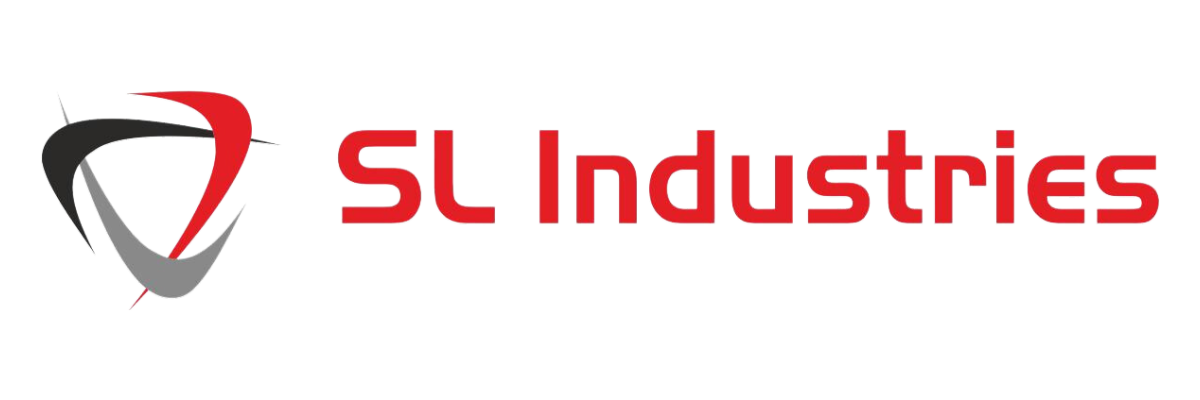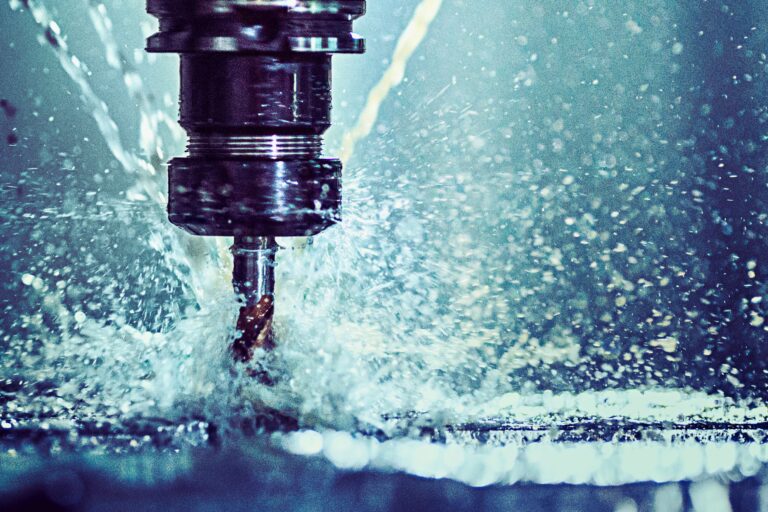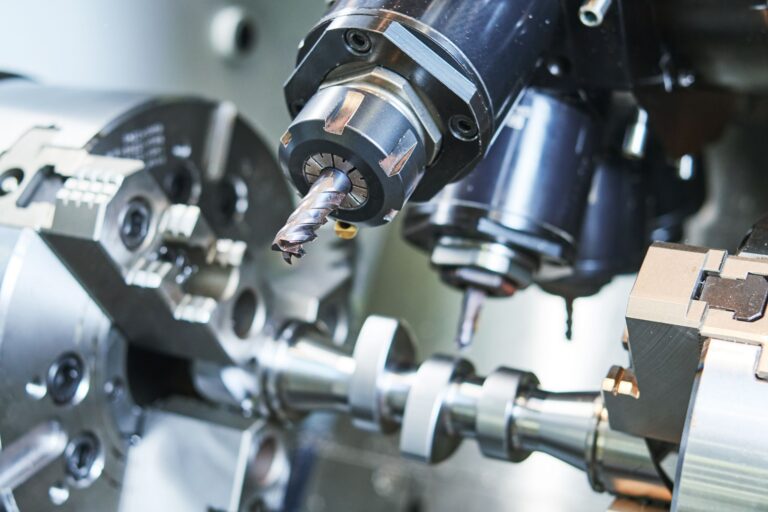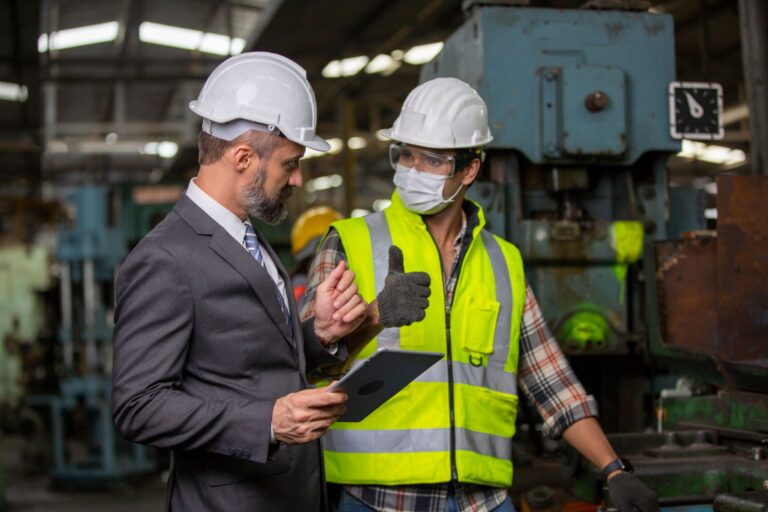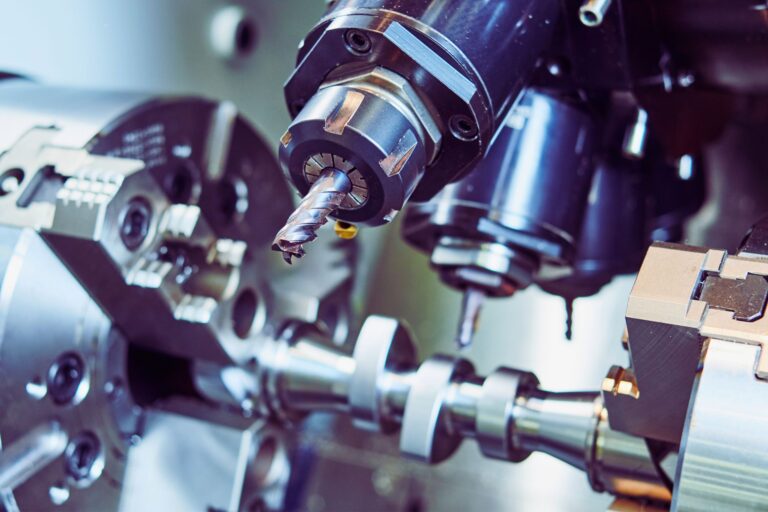Die Metallverarbeitung ist eine komplexe und anspruchsvolle Branche mit hohen Temperaturen, schweren Maschinen und gefährlichen Materialien. Eine sichere Arbeitsumgebung ist entscheidend für den Schutz der Mitarbeiter, die Steigerung der Produktivität und die Einhaltung gesetzlicher Vorschriften. Mit der Weiterentwicklung der Sicherheitsstandards prägen neue Innovationen und bewährte Verfahren die Zukunft der Arbeitssicherheit in der Metallverarbeitung, beim Schweißen und in der maschinellen Bearbeitung.
Die Bedeutung der Sicherheit in der Metallverarbeitung
Arbeitsunfälle in der Metallverarbeitung können zu schweren Verletzungen, Betriebsausfällen und rechtlichen Folgen führen. Durch die Umsetzung robuster Sicherheitsmaßnahmen können Unternehmen Risiken minimieren, die Effizienz steigern und eine Kultur der kontinuierlichen Verbesserung der Arbeitssicherheit fördern.
Best Practices für Sicherheit in der Metallverarbeitung
1. Umfassendes Sicherheitstraining
Gut geschulte Mitarbeiter sind die erste Verteidigungslinie gegen Gefahren am Arbeitsplatz. Mitarbeiter sollten regelmäßig geschult werden in:
- Richtiger Einsatz der persönlichen Schutzausrüstung (PSA)
- Sicherer Umgang mit Gefahrstoffen
- Notfallreaktionsprotokolle
- Korrekte Bedienung von Maschinen und Werkzeugen
2. Verwendung persönlicher Schutzausrüstung (PSA)
Schutzausrüstung ist unerlässlich, um Arbeiter vor Verbrennungen, Schnitten und dem Kontakt mit Schadstoffen zu schützen. Wichtige PSA umfasst:
- Feuerfeste Kleidung
- Sicherheitshandschuhe und Stahlkappenstiefel
- Atemschutz bei Schweißarbeiten und chemischer Belastung
- Schutzbrillen und Gesichtsschutz
3. Maschinensicherheit und Automatisierung
Zu den modernen Sicherheitsinnovationen gehören:
- Verriegelungsschutzsysteme: Verhindert den Zugang zu beweglichen Teilen während des Maschinenbetriebs.
- Automatische Abschaltmechanismen: Anhalten von Maschinen, wenn Unregelmäßigkeiten oder unsichere Bedingungen erkannt werden.
- Kollaborative Roboter (Cobots): Reduzierung der Notwendigkeit, Menschen gefährlichen Aufgaben auszusetzen, indem schwere Lasten gehoben und Präzisionsarbeiten ausgeführt werden.
4. Richtige Belüftung und Luftqualitätsmanagement
Metallverarbeitungsprozesse wie Schweißen, Schneiden und Schleifen setzen luftgetragene Schadstoffe frei. Geeignete Belüftungssysteme tragen dazu bei:
- Reduzieren Sie die Belastung durch giftige Dämpfe und Staub.
- Sorgen Sie für die Luftqualität und die Gesundheit Ihrer Mitarbeiter.
- Achten Sie auf die Einhaltung der Arbeitsschutzvorschriften.
5. Brandschutz und Gefahrstoffmanagement
In Metallverarbeitungsbetrieben werden häufig brennbare Materialien verarbeitet und hohe Temperaturen erreicht. Zu den bewährten Brandschutzmaßnahmen gehören:
- Installation von Feuerlöschsystemen und Feuerlöschern in wichtigen Bereichen.
- Sachgemäße Lagerung und Entsorgung brennbarer Materialien.
- Regelmäßige Inspektionen zur Erkennung potenzieller Brandgefahren.
6. Ergonomische Arbeitsplätze und Verletzungsprävention
Lange Arbeitszeiten in der Metallverarbeitung können zu RSI-Verletzungen und Ermüdung führen. Ergonomische Lösungen umfassen:
- Verstellbare Werkbänke zur Reduzierung der Belastung.
- Mechanische Hebehilfen für schwere Materialien.
- Richtige Arbeitsplatzaufteilung, um übermäßige Bewegungen zu minimieren.
Innovationen im Bereich Sicherheit in der Metallverarbeitung
1. Tragbare Sicherheitstechnologie
Intelligente PSA, wie beispielsweise Helme mit Augmented Reality (AR)-Displays und angeschlossenen Sensoren, bieten Sicherheitswarnungen in Echtzeit und überwachen die Gesundheit der Arbeiter.
2. KI und maschinelles Lernen für die Risikoanalyse
KI-gestützte Systeme können Arbeitsplatzdaten analysieren, um potenzielle Gefahren vorherzusagen und vorbeugende Maßnahmen zu empfehlen, bevor Unfälle passieren.
3. IoT-gestützte Sicherheitsüberwachung
Geräte des Internets der Dinge (IoT) können Umgebungsbedingungen, Gerätestatus und den Standort der Mitarbeiter überwachen, um die Sicherheit am Arbeitsplatz zu verbessern.
4. Exoskelette zur Unterstützung der Belegschaft
Tragbare Roboter-Exoskelette verringern die Belastung der Arbeiter, indem sie sie beim Heben schwerer Lasten und bei sich wiederholenden Aufgaben unterstützen und so das Risiko von Muskel-Skelett-Verletzungen verringern.
Die Zukunft der Sicherheit in der Metallverarbeitung
Mit dem technologischen Fortschritt werden in der Metallverarbeitung immer intelligentere, sicherere und effizientere Sicherheitsmaßnahmen eingeführt. Unternehmen, die in Automatisierung, KI und ergonomische Lösungen investieren, verbessern nicht nur das Wohlbefinden ihrer Mitarbeiter, sondern steigern auch die Produktivität und Betriebssicherheit.
Bei SL Industries wissen wir, wie wichtig Sicherheit als Grundlage für erfolgreiche Fertigungsabläufe ist. Indem Hersteller stets an der Spitze der Best Practices und Innovationen bleiben, können sie einen sichereren und effizienteren Arbeitsplatz schaffen, der sowohl den Mitarbeitern als auch dem Geschäftsergebnis zugutekommt.
